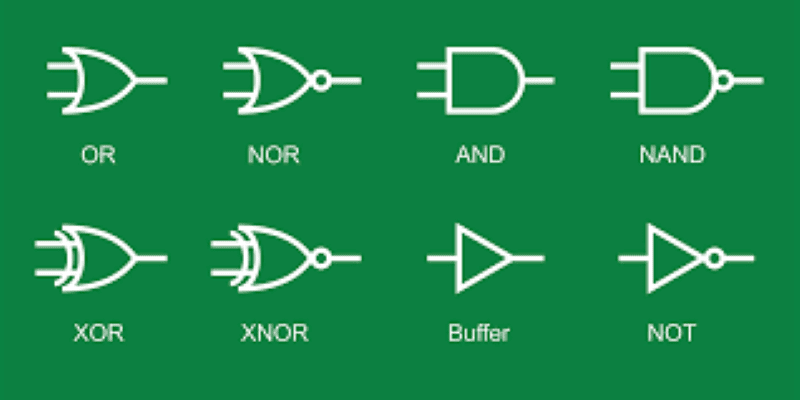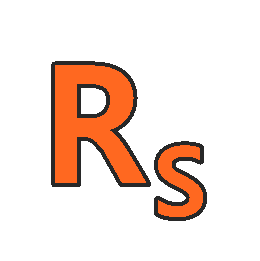
About Course
Digital Electronic Circuits. There is a flux of terms in recent times that starts with the word ‘digital’. Examples are a digital camera, digital watch, digital weighing machine, digital signature, digital payment, digital art, and so on. The digital prefix associates a term with digital technology and is considered a step up in the delivered performance at a given cost.
Digital Electronic Circuits. The world of digital provides easy storage and reproduction, immunity to noise and interference, flexibility in processing, different transmission options, and very importantly, inexpensive building blocks in the form of integrated circuits. Digital systems represent and manipulate digital signals. Such signals represent only a finite number of discreet values. A signal can be discreet by nature whereas, a continuous signal can be discretized for digital processing and then converted back. Manipulation and storage of digital signals involve switching. This switching is done through electronic circuits. Basic gates made from electronic circuits are the primary building blocks of digital systems.
These gates combine in different ways to develop digital circuits that are associated with different functionalities. This is helped by an understanding of Boolean Algebra. The functional blocks, in turn, combine to generate a complex digital system. There are general-purpose programmable blocks, too. This course is aimed at developing a deep understanding of digital electronic circuits. At the end of the course, one would be able to analyze and synthesize different kinds of combinatorial and sequential digital systems for real-world use.
INTENDED AUDIENCE: Electronics, Electrical, Instrumentation, Computer Science
Course Content
Digital Electronic Circuits
-
Digital Electronic Circuits
00:00 -
Lecture 01: Introduction
00:00 -
Lecture 02: Transistor as a Switch
00:00 -
Lecture 03 : Performance Issue and Introduction to TTL
00:00 -
Lecture 04 : Transistor Transistor Logic (TTL)
00:00 -
Lecture 05: CMOS Logic
00:00 -
Lecture 06: Basic Gates and their representations
00:00 -
Lecture 07 : Fundamentals of Boolean Algebra
00:00 -
Lecture 08 : Boolean Function to Truth Table and Implementation Issues
00:00 -
Lecture 09 : Truth Table to Boolean Function and Implementation Issues
00:00 -
Lecture 10 : Karnugh Map and Digital Circuit Realization
00:00 -
Lecture 11: Karnaugh Map to Entered Variable Map
00:00 -
Lecture 12: Quine – McClusky (QM) Algorithm
00:00 -
Lecture 13: Cost Criteria and Minimization of Multiple Output Functions
00:00 -
Lecture 14: Static 1 Hazard
00:00 -
Lecture 15: Static 0 Hazard and Dynamic Hazard
00:00 -
Lecture 16: Multiplexer: Part I
00:00 -
Lecture 17: Multiplexer: Part II
00:00 -
Lecture 18: Demultiplexer / Decoder
00:00 -
Lecture 19: Decoder with BCD Input and Encoder
00:00 -
Lecture 20: Parity Generator and Checker
00:00 -
Lecture 21:Number System
00:00 -
Lecture 22: Negative Number and 2’s Complement Arithmetic
00:00 -
Lecture 23: Arithmetic Building Blocks-I
00:00 -
Lecture 24: Arithmetic Building Blocks-II
00:00 -
Lecture 25: Overflow Detection and BCD Arithmetic
00:00 -
Lecture 26: Magnitude Comparator
00:00 -
Lecture 27: Arithmetic Logic Unit (ALU)
00:00 -
Lecture 28: Unweighted Code
00:00 -
Lecture 29: Error Detection and Correction Code
00:00 -
Lecture 30: Multiplication and Division
00:00 -
Lecture 31: SR Latch and Introduction to Clocked Flip-Flop
00:00 -
Lecture 32: Edge-Triggered Flip-Flop
00:00 -
Lecture 33: Representations of Flip-Flops
00:00 -
Lecture 34: Analysis of Sequential Logic Circuit
00:00 -
Lecture 35: Conversion of Flip-Flops and Flip-Flop Timing Parameters
00:00 -
Lecture 36: Register and Shift Register: PIPO and SISO
00:00 -
Lecture 37: Shift Register: SIPO, PISO and Universal Shift Register
00:00 -
Lecture 38: Application of Shift Register
00:00 -
Lecture 39: Linear Feedback Shift Register
00:00 -
Lecture 40: Serial Addition, Multiplication and Division
00:00 -
Lecture 41: Asynchronous Counter
00:00 -
Lecture 42: Decoding Logic and Synchronous Counter
00:00 -
Lecture 43: Cascading: Mod 2, 3, 5 to Mod 6, 10, 1000 Counter
00:00 -
Lecture 44: Counter Design with Asynchronous Reset and Preset
00:00 -
Lecture 45: Counter Design as Synthesis Problem and Few Other Uses of Counter
00:00 -
Lecture 46: Synthesis of Sequential Logic Circuit: Moore Model and Mealy Model
00:00 -
Lecture 47: Moore Model and Mealy Model: Realization of Digital Logic Circuit
00:00 -
Lecture 48: Algorithmic State Machine (ASM) Chart and Synthesis of Sequential Logic Circuit
00:00 -
Lecture 49: Circuit Realization from ASM Chart and State Minimization
00:00 -
Lecture 50: State Minimization by Implication Table and Partitioning Method
00:00 -
Lecture 51: Digital to Analog Conversion – I
00:00 -
Lecture 52: Digital to Analog Conversion – II
00:00 -
Lecture 53: Analog to Digital Conversion – I
00:00 -
Lecture 54: Analog to Digital Conversion – II
00:00 -
Lecture 55: Certain Performance Issue of ADC and DAC
00:00 -
Lecture 56: Introduction to Memory
00:00 -
Lecture 57: Static Random Access Memory (SRAM)
00:00 -
Lecture 58: Dynamic RAM(DRAM) and Memory Expansion
00:00 -
Lecture 59: Read Only Memory (ROM)
00:00 -
Lecture 60: PAL, PLA, CPLD, FPGA
00:00
Student Ratings & Reviews

